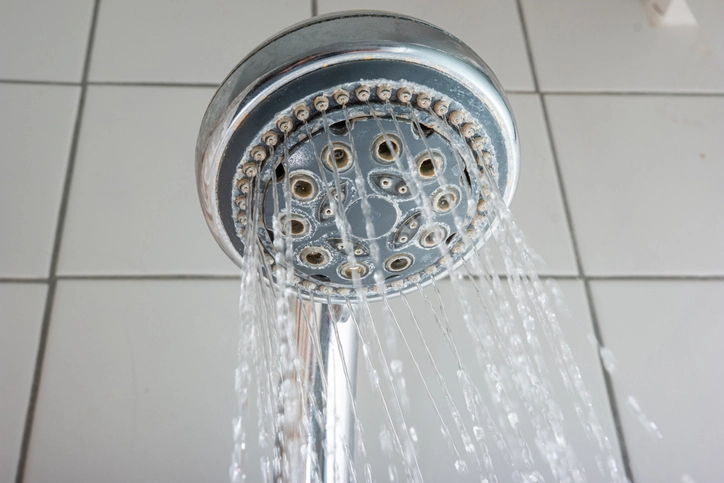Mould Reduction Tips to Prevent Mould Growth
Mould growth is a common household problem that can be harmful to one’s health if left untreated. Prevention is key to ensuring that you and your family live in a healthy environment. With these expert mould prevention tips, you can effectively tackle this issue and create a mould-free home.
Mould is not only unsightly, but it can also cause allergies and breathing problems. Applying these suggestions will help you prevent the growth of mould and maintain a healthier home:
Key Takeaways:
Maintaining moisture control is crucial to preventing the growth of mould.
Enough ventilation and air circulation can prevent the formation of mould and reduce humidity.
Keeping your home mould-free and clean can be beneficial.
If you take proactive measures and identify common areas in your home where mould grows, you can prevent mould before it becomes a problem.
Understanding the basics of mould and the potential health risks it poses is essential to effective mitigation.
Recognizing Mould and Its Effects on Health
Understanding the fundamentals of mould and its possible health effects is essential before you can take effective measures to prevent mould growth in your home. One kind of fungus that grows well in warm, humid conditions is mould. It spreads by dispersing spores into the atmosphere, which both people and animals can breathe in.
Many health issues can arise from mould exposure, particularly in people who already have allergies, asthma, or compromised immune systems. Typical mould exposure symptoms include:
- wheezing and coughing
- congestion in the sinuses and nose
- sore throat irritated eyes
- Skin irritation
Mould exposure occasionally leads to more serious health issues such as respiratory infections and neurological disorders.
Recalling that not all moulds are harmful and that not everyone reacts to mould in the same way is vital. However, if you suspect that there may be mould in your home, it is best to take preventative measures and get rid of any that you find.
Let’s start by identifying common areas in your home where mould growth is likely to occur, now that you know about the potential health effects of mould.
Locating Areas of Your Home That Are Often Mould-Prone
Any moist, humid area of your house can harbour mould, but some areas are more prone to it than others. By taking preventative measures, you can prevent the growth of mould in these common areas before it becomes a problem.
| Common Mould Prone Areas | Why They Are Prone to Mould Formation |
|---|---|
| Bathroom | The bathroom is the most humid area of your home due to baths and showers. It also lacks proper ventilation, creating a moist environment that is perfect for the development of mould. |
| Kitchen | Dishwashing, cooking, and using the dishwasher all release moisture into the air. Food spills and crumbs also provide mould with an additional food source. |
| Basement | It’s common knowledge that basements are humid and poorly ventilated. Mould can grow on any organic material, including wood, carpet, and cardboard boxes, and moisture can seep through walls and floors. |
| Attic | Attics may become humid as a result of roof leaks and insufficient ventilation. Additionally, insulation has the potential to hold onto moisture, which would promote the growth of mould. |
| Crawl Space | Mould grows easily in crawl spaces because they are often damp and have poor ventilation. Wood, insulation, and other organic materials in the crawl space can all harbour mould. |
By being aware of these common mould-prone areas, you can take action to prevent the growth of mould in your home. In the section that follows, we’ll examine doable moisture control techniques to keep these areas mould- and moisture-free.
Appropriate Methods of Moisture Management
One of the main things that causes mould to grow is moisture. Mould grows in moist environments, as we covered in the previous section. Thus, keeping moisture under control is essential to keeping mould from growing in your house. We’ll look at practical moisture control methods in this section to help you maintain a dry and mould-free home.
Take into account these moisture management techniques:
- Fix leaks: Mould thrives in areas with constant moisture supply, which is provided by leaks. Make sure that any leaks are promptly fixed.
- Use exhaust fans: When cooking or taking a shower, use the exhaust fans to control the amount of moisture in your home.
- Retain humidity levels below 60% as elevated humidity can promote the development of mould. Use a dehumidifier to maintain optimal humidity levels in your home.
- Insulate pipes and windows to help stop condensation, a source of moisture.
- Ensure there is adequate ventilation in your house. It’s essential to dry living. Verify that attics and crawl spaces have enough ventilation.
You can help prevent mould growth in your home by using these moisture control techniques. Remember that mould can be extremely harmful to one’s health, so preventing it is necessary to keep one’s home healthy.
Advice on Ventilation and Air Circulation To Prevent Mould Growth
Mould growth in your home can be avoided with proper ventilation and air circulation. You can lessen the moisture levels that mould loves by increasing the airflow throughout your house. The following useful advice will help you increase ventilation and air flow in your house:
- Open your windows and doors to let fresh air into your house, which lowers humidity and improves air quality.
- Employ exhaust fans: These devices can help you get rid of extra moisture and stop the growth of mould in your kitchen and bathroom.
- Boost airflow: You can improve ventilation and airflow by using fans and leaving interior doors open.
- Replace air filters on a regular basis: Clogged filters can worsen the quality of the air and raise humidity levels.
Pro Tip: If you live in an area with high humidity, getting a dehumidifier will help keep the air dry and prevent the growth of mould.
By implementing these ventilation and air circulation strategies, you can improve the quality of the air in your home and prevent the growth of mould. Remember that prevention is the key to creating a healthy home for you and your family.
Methods of Cleaning and Maintenance to Stop Mould Growth
The growth of mould can be avoided by regularly maintaining and cleaning your home. You can use the following effective cleaning techniques and maintenance routines to stop the growth of mould:
- Leaks and spills need to be cleaned up immediately because mould can develop in wet areas in as little as 48 hours. As soon as spills and leaks are discovered, clean them up to prevent moisture from lingering.
- Keep your home dry: Moisture is one of the main factors that promotes the growth of mould. Use dehumidifiers to control the humidity levels in damp spaces, such as crawl spaces and basements. Make sure to fix any leaks in your walls, roof, or plumbing to keep your home dry.
- When remodelling or refurbishing your house, use materials like drywall, paint, and insulation that are resistant to mould. Over time, these products may help inhibit the growth of mould.
- Clean and maintain your HVAC system: Replace your HVAC system’s filter on a regular basis and give it a thorough cleaning to prevent the growth of mould throughout your home. Get a professional to inspect and clean your system once a year.
- Preserve visible mould: As soon as you notice any signs of visible mould growth, clean it up with a bleach and water solution. Don safety gear like a mask and gloves to avoid breathing in mould spores.
- Keep an eye on humidity levels: Be especially aware of the humidity in your home’s damper sections. To check the humidity levels and make the required corrections, use a hygrometer.
- Upkeep and inspection of your house: Keep a watch out for any signs of mould development, especially in the typical mould-prone locations that we discussed in section 3. Proactively address any issues to prevent them from getting worse.
Never forget that prevention is your best line of defence against mould. You and your family can live in a healthier environment and stop mould growth in your home by using these maintenance and cleaning tips.
With the help of these expert mould prevention tips, you can prevent mould growth in your home and create a healthier living environment. Never forget that it is always better to avoid a mould infestation than to deal with its consequences. Take precautions, apply the advice you’ve received, and enjoy a mould-free environment for years to come.
FAQ
Which expert mould prevention tips would you like to share for a more wholesome home environment?
Professional tips exist to effectively stop the growth of mould in your home. A few crucial strategies include managing moisture, improving ventilation, and implementing routine cleaning and maintenance protocols.
Why is it so important to understand how mould affects health?
To ensure that the right precautions are taken, it is imperative to understand mould and its potential health effects. Understanding the dangers of mould exposure is essential since it can lead to allergies, respiratory conditions, and other health problems.
Which common areas of a house are prone to the growth of mould?
Mould thrives in damp and poorly ventilated areas of the house, such as the bathroom, kitchen, basement, attic, and crawl spaces. These areas often have moisture issues that create an ideal environment for mould growth.
How does controlling moisture in a home contribute to mould prevention?
Moisture control is essential because mould needs moisture to thrive. Fixing leaks, using exhaust fans, maintaining humidity below 60%, and insulating pipes are all crucial steps to prevent moisture accumulation and stop mould growth.
What are some practical ventilation tips to reduce mould growth?
Opening windows and doors to allow fresh air circulation, using exhaust fans in moisture-prone areas, increasing airflow with fans, and regularly replacing air filters are effective ways to reduce humidity and prevent mould growth.
What cleaning and maintenance practices help prevent mould?
Regular cleaning, prompt cleanup of spills and leaks, using mould-resistant materials, maintaining HVAC systems, monitoring humidity levels, and addressing visible mould immediately are important practices to keep mould at bay.
LATEST BLOGS & INSIGHTS
Expert Advice and Real Stories from Melbourne
Leak Detection
What Are The Common Reasons For Bathroom Leaks
Identify the most frequent causes behind bathroom leaks and their solutions.
Water Damage
How a Hidden Water Leak Can Cost You Thousands of Dollars
Exposed how hidden water leaks lead to costly repairs and property damage.
Leak Detection
The Importance Of Early Shower Leak Detection
Why spotting shower leaks early can save your home, property and budget.


